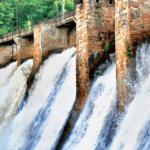With worsening climate change and mounting pressure on governments to opt for renewable energy sources, countries around the world have been adopting ambitious targets to be fossil free. China plans to become carbon neutral by 2060[1], the European bloc has announced that it will reduce its carbon emissions by at least 55% by 2030[2], Britain is halfway to its goal of being carbon neutral by 2050, the US has pledged to achieve carbon neutrality by 2050 and many countries are following suit. Considering this, the dream of ending worldwide dependency on petroleum, coal and natural gas may not be that far. The question, however, is how can this promising future be actualized? And how can Nepal hop onto this wagon?
While the targets presented above may seem unachievable for many small and underdeveloped countries, researchers from Stanford University and other universities have plotted out roadmaps for a total of 139 nations to transition to 100% renewable energy by 2050. The plans call for all energy sectors i.e. transportation, heating/cooling, industry, agricultural/ fishing/ forestry to be completely electrified. Moreover, a complete implementation of these roadmaps will help avoid 1.5 degree Celsius warming and 4.6 million air pollution related deaths along with reducing social cost of energy and creating 24.3 million net long-term jobs[3]. The study tells us that it is technically possible to transition to 100% renewable energy sources well before 2050. Here are a few takeaways for Nepal as and when it may look to welcoming more renewable energy sources.
Moving towards electrification
Electrification is key if we are to achieve the targets set to address climate change. Electricity generation in 2050 is set to exceed 4-5 times that of 2015 and constitute more than 90% of the primary energy demand by the middle of this century. Since the clean and carbon-free energy sources are variable, electrification can help balance out variations and fluctuating nature of the sun and wind. Moreover, unlike the electricity generated through fossil fuels, renewables- based electricity is also shielded from the fluctuating commodity prices and produced at a zero variable cost. Hence, energy electrification is not only the path to decarbonization but also to a more sustainable, efficient and affordable approach for the transition towards 100% renewables.
Incentives at local levels
The move towards renewables is one triggered by the perilous effects of climate change. While many countries have this as a priority, many developing countries around the world are still hesitant. One way to accelerate this approach is through feebates- imposing a fee on activities as well as products with high carbon emission rates and providing a rebate on activities and products with low carbon emission rates.
An example of this would be to impose a fee on new vehicles equal to the product of a carbon price, the difference between the vehicle’s emissions per mile and the fleet average, and the average mileage of a vehicle. Other similar schemes could also be applied to sectors like industry, agriculture, buildings and forestry.
Investing in Grids
While many developing nations may feel like they are at a loss grappling with the effects of climate change and making a major shift to renewables in the midst of development and progress, there is an advantage that many miss to notice. These states can learn from the mistakes made by developed nations and leapfrog the design, operation and management of a grid that is suited towards decentralized and off-grid electricity generation.
For example, although still in a beta phase, there is a hype of Smart Grids in developing countries like Brazil. Smart Grid is a concept for transforming the electric power grid by using advanced automatic control and communications techniques as well as other forms of information technology. While developed nations China, United States, Japan, India, and Germany are respectively the top five countries in terms of smart grid investment over the next decade, there are chances of developing nations jumping to these spots with increased investments and technologies in the current grids.
Even though the shared long term renewable energy goals are ambitious, there are encouraging signs to make it happen. Consider the ever-dwindling cost of renewable technologies; the increasing share of electricity as an energy carrier for end uses; and the energy industry leaning towards electrification. If we supplement the current situation with proper incentives and policies, and ramp up technology and investments in grids, the transition towards a 100% renewable could definitely be speed up.
[1] ‘China carbon neutrality in 2060: a possible game changer for climate’, Delegation of the European Union to Thailand, 23 November 2020. Retrieved from: https://eeas.europa.eu/delegations/thailand/87431/china-carbon-neutrality-2060-possible-game-changer-climate_en
[2] ‘Climate change: EU to cut CO2 emissions by 55% by 2030’, BBC News, 21 April 2021. Retrieved from: https://www.bbc.com/news/world-europe-56828383
[3] Jacobson, M. Z., Delucchi, M. A., Bauer, Z. A., Goodman, S. C., Chapman, W. E., Cameron, M. A., … & Yachanin, A. S. (2017). 100% clean and renewable wind, water, and sunlight all-sector energy roadmaps for 139 countries of the world. Joule, 1(1), 108-121.





